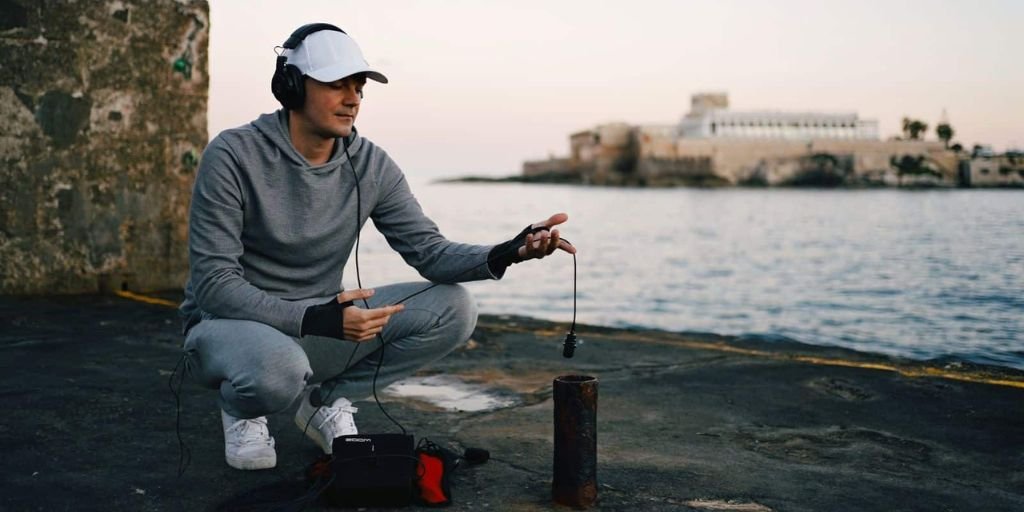Best Hydrophone for Field Recording
Learn about recording underwater sounds with high quality hydrophones
Best Hydrophone For Field Recording
Welcome to our website where you'll discover a treasure trove of underwater sound libraries that we recorded with different hydrophones over the last couple years. These raw, unprocessed recordings are a goldmine for sound engineers, sound designers, and musicians who recognize the creative potential of underwater sounds.
I highly recommend the hydrophone I use, which boasts an impressive frequency response range spanning from very low to ultra-high frequencies of up to 90kHz (or possibly higher). Do note that when recording settings are set to 192kHz, the cut-off is at 96kHz. More underwater sound libraries are on Bandcamp!
How to choose a hydrophone
Now whether you want to create sound libraries for others to use or simply want to record your own sounds, when choosing a hydrophone for field recording there are several factors to consider, including:
Sensitivity: This refers to the ability of the hydrophone to pick up sounds. A more sensitive hydrophone will be better at recording quieter sounds, but may also pick up unwanted noise.
Frequency response: This is the range of frequencies that the hydrophone can pick up. A wider frequency response is generally better, as it allows you to record a greater range of sounds.
Self-noise: This is the amount of noise that the hydrophone produces itself. A lower self-noise is better, as it means that the hydrophone will pick up more of the desired sound and less of its own noise.
Directionality: Hydrophones can be either omnidirectional (picking up sound from all directions) or directional (picking up sound from a specific direction). The choice depends on the type of sounds you want to get.
Price: Hydrophones can range in price from less than $100 to several thousand dollars. The price you pay will depend on your needs and budget.
Phantom power is an important factor to consider when choosing a hydrophone for field recording. Cheaper hydrophones may not require phantom power, making them easier to use with recording devices without XLR inputs. However, these products often have a higher self-noise and may not reproduce the same frequency range as hydrophones with phantom power.
Ambient ASF2 MK2 Hydrophone
When I first began my field recording journey, I acquired a set of Limpet Mics hydrophones, which unfortunately are no longer available. While these hydrophones were effective, I found myself yearning for something more advanced as I progressed in my craft. After conducting extensive research, I decided to invest in a hydrophone with phantom power. While this required me to spend more money, I believe it was a worthwhile investment to take my recordings to the next level.
Up to this day, I am still very happy with my choice of purchasing the Ambient ASF2 MK2 hydrophone. Not only does it deliver outstanding sound quality, but I have also been blown away by the exceptional level of service and innovation from Ambient. Perhaps you already know Ambient for their other top-of-the-line products like Boom Poles or the Emesser Figure 8, but they also make some of the most exceptional hydrophones on the market.
The Ambient ASF2 MK2 met all of my criteria and I'm not just saying that - I'm putting it to the test. Libby and I are among the very few field recordists who create videos about field recording and the equipment we use. Want to see the Ambient ASF2 MK2 in action? Check out the video below.
Ambient ASF1 MK2
I want to emphasize that this is not a sponsored post. We purchase all of our gear, but something incredible happened. After one of our short Instagram videos went viral, and several other people watched our YouTube video about the ASF2 and decided to buy it, Ambient reached out to us to express their gratitude. As a thank you gift, they sent us the Ambient ASF1 MK2, which was an amazing surprise.
This hydrophone is undeniably incredible, but if you plan to travel full-time, I would still recommend the ASF2 MK2 due to its weight, size, and setup time. When using the ASF1, I realized that not only did I draw attention to myself in harbors, but I also couldn't fit all of my gear into one bag. While the ASF1 is great for research and field trips with a fixed home base, it doesn't suit our lifestyle. In 2024, we're all about one-pack travel, and unfortunately, the ASF1 won't make the cut. However, the ASF2 definitely will.
But we wouldn't be Free To Use Sounds without making a comparison video, so get your headphones ready as we compare both hydrophones.
Other Hydrophones
Of course, there are many other hydrophones available that people use, but we only recommend products that we have tested and used ourselves. We can confidently say that Ambient makes some of the best hydrophones for field recording purposes. Ultimately, the choice is yours to make.



